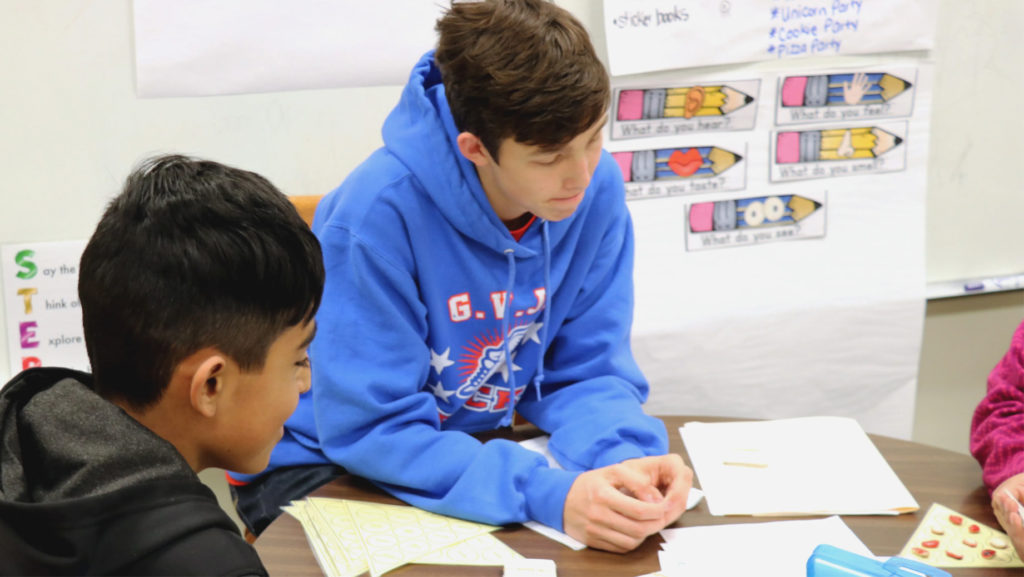
Liliya Stefolgo & Pam Schaff are two of OSSI’s Continuous Improvement Partners who work in several districts with schools identified for targeted and comprehensive support and bring their wealth of experience and expertise to provide coaching on English learners and English Language Arts.
It is essential that we make a choice to see beyond. Preparing ALL students to live successfully with a solid foundation has a ripple effect that is felt in the classroom, the school, and finally the neighborhood students live in. Across the nation and state you read about schools looking for ways to become more diversified to help make students and families feel represented or included. However, diversity itself does not make an individual or family feel included. As a district, school, and teacher we ask, “ How do we support all students and families?” This requires a shift from focusing on diversity to inclusion. When focusing on increasing diversity, we are only addressing the external needs. Inclusion points the finger at us as individuals and raises the question, “How do I ensure that every child and member of their family feel welcome in my district, school, and classroom?”
Let’s explore 8 characteristics of inclusive classrooms that support English Language Learners.
- Low affective filter is a way of building an encouraging classroom atmosphere where students feel comfortable and willing to participate and take risks. Our brain needs to be free from anxiety and negative feelings/emotions in order for us to participate in learning. If we do not have low affective filter classrooms, our students’ capacity to learn is practically zero.
- Comprehensible input is a group of supportive strategies that make concepts and vocabulary understandable and increase access to core instruction. GLAD and SIOP are two examples of structures that include comprehensible input strategies.
- Focus on communication for authentic purposes. Create opportunities for your students to process their learning in meaningful ways. Plan these opportunities on purpose throughout your day.
- Contextualized language or thematic approach to teaching is a must for your ELs. Your students’ learning increases when they are “bathed” in a language of a specific theme/content for a period of time. Integration of content, language, and literacy is the most effective way to accelerate your ELs’ growth.
- Error acceptance is a decision you make as a teacher to let go of linguistic correctness (grammar, sentence structure, etc.). A student’s message should be your focus. You may correct errors through modeling proper use of language forms as you respond to your students orally and/or in writing. This should be done in authentic, non-threatening ways to keep that affective filter low.
- Increase wait time is a HUGE factor in building language learners’ self esteem. Even for adults who are multilingual/multi literal, time is still appreciated as it allows the brain to process information and formulate a response. On the contrary, it is extremely frustrating when that opportunity is not given. Resulting in feelings of inadequacy; resulting in the desire to withdraw from a conversation.
- Use of first language and home culture is critical. When students are not allowed to use their heritage language to process and share their learning, they are robbed of an opportunity to use their strength. Visualize an amputated limb. That is exactly how it feels when ELs who have strong oracy and/or literacy in their native language are prohibited from using their strength to access learning as well as to showcase it. Many times, this results in student misbehavior and absenteeism.
- Authentic assessment based on multiple measures that may include running records, anecdotal observations, checklists, ELD reviews (language running records) oral language and writing rubrics, and student work samples- when embedded in instruction- provide the teacher with much needed information about students’ strengths. How accurately we assess our students’ daily learning is the most important element in planning next instructional steps.
Each of the eight characteristics play a part in transforming the current systems and structures which exist in our districts, schools, and classrooms to intentionally design an environment that welcomes every child and family. A space where every student and family feels welcomed, appreciated, supported, and honored for their individual strengths and culture. It is up to each of us to transform the current systems and structures that prevent us and our students from seeing beyond.
